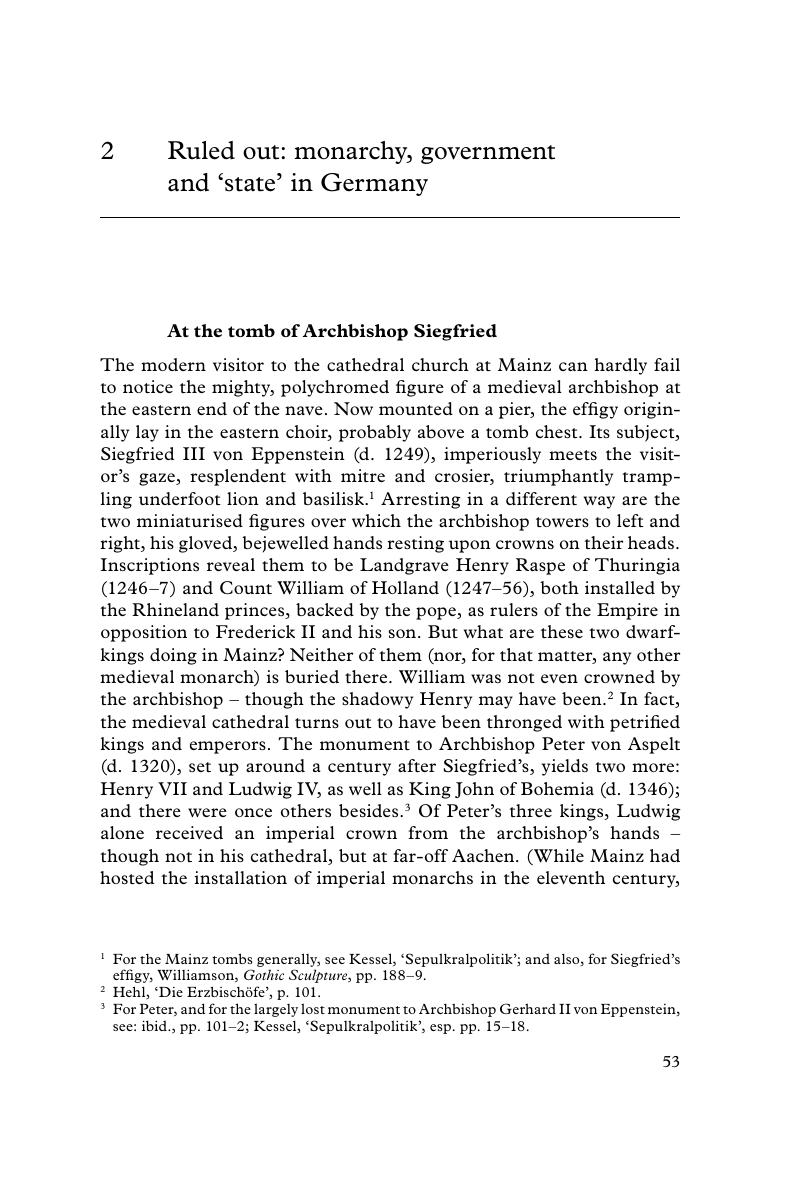Book contents
- The Shaping of German Identity
- The Shaping of German Identity
- Copyright page
- Dedication
- Contents
- Maps
- Book part
- Acknowledgements
- Abbreviations
- Introduction German questions
- 1 Modern history: inventing the medieval German nation
- 2 Ruled out: monarchy, government and ‘state’ in Germany
- 3 Realm of imagination: communicating power after the Hohenstaufen
- 4 Shades of a kingdom: in search of a German political community
- 5 The matter of Rome: universalising political identities
- 6 Roman Empire, German nation: the German imperial tradition
- 7 Trojans, giants and other Germans: peoplehoods forgotten, remembered and relocated
- 8 Rome’s barbarians: accounting for the Germans
- 9 East: applying identities
- 10 Being German (I): place and name
- 11 Being German (II): language and locality
- Conclusion: endings and beginnings
- Sources and bibliography
- Index
2 - Ruled out: monarchy, government and ‘state’ in Germany
Published online by Cambridge University Press: 05 May 2012
- The Shaping of German Identity
- The Shaping of German Identity
- Copyright page
- Dedication
- Contents
- Maps
- Book part
- Acknowledgements
- Abbreviations
- Introduction German questions
- 1 Modern history: inventing the medieval German nation
- 2 Ruled out: monarchy, government and ‘state’ in Germany
- 3 Realm of imagination: communicating power after the Hohenstaufen
- 4 Shades of a kingdom: in search of a German political community
- 5 The matter of Rome: universalising political identities
- 6 Roman Empire, German nation: the German imperial tradition
- 7 Trojans, giants and other Germans: peoplehoods forgotten, remembered and relocated
- 8 Rome’s barbarians: accounting for the Germans
- 9 East: applying identities
- 10 Being German (I): place and name
- 11 Being German (II): language and locality
- Conclusion: endings and beginnings
- Sources and bibliography
- Index
Summary

- Type
- Chapter
- Information
- The Shaping of German IdentityAuthority and Crisis, 1245–1414, pp. 53 - 97Publisher: Cambridge University PressPrint publication year: 2012

